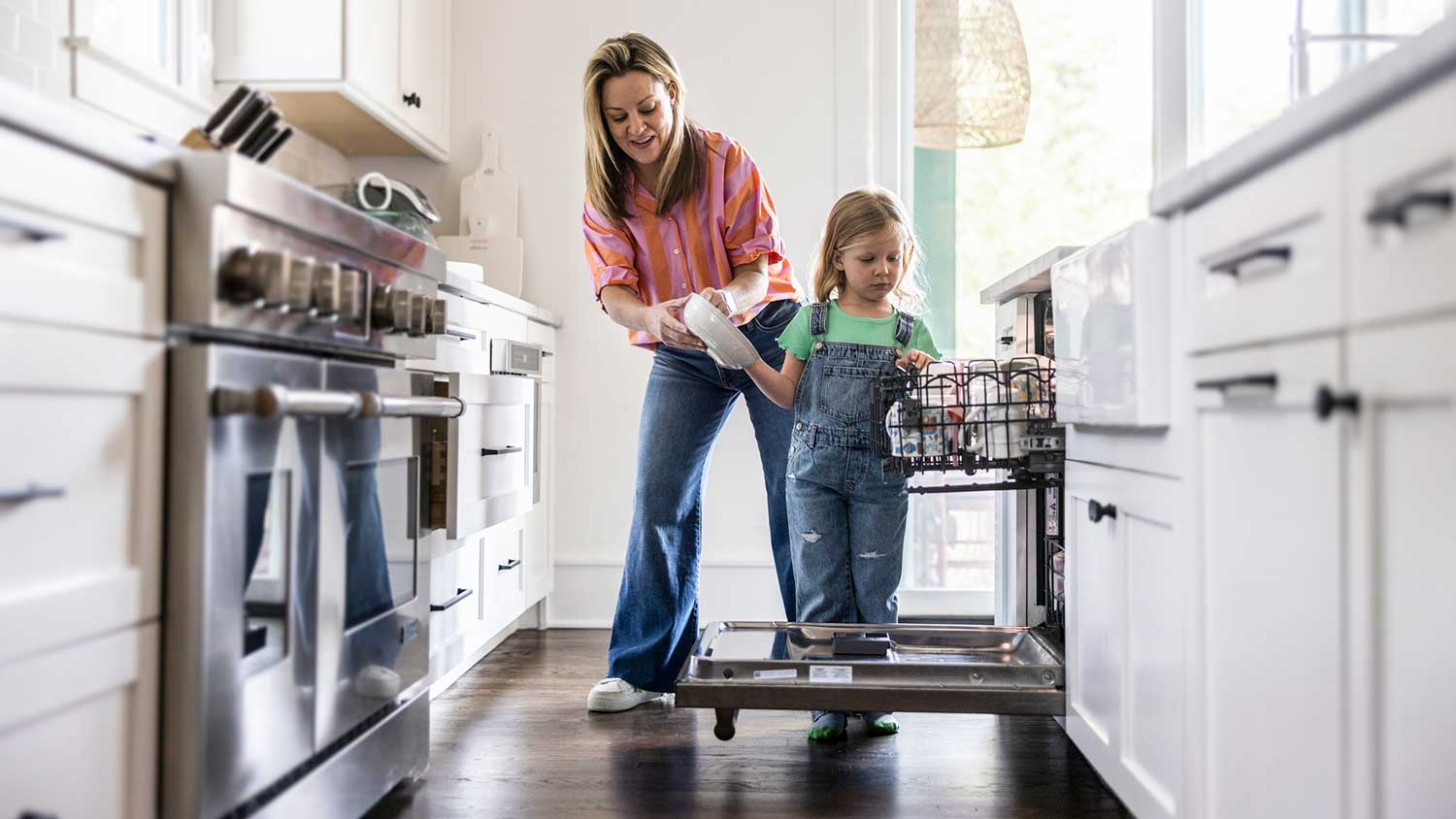
Whether you’re replacing an old dishwasher or buying your first, find out more about dishwasher costs, including new dishwasher installation.
An unbalanced washer can sound dramatic, but it’s typically an easy fix


Even the most reliable washer can sometimes exhibit disruptive wobble or unsettling vibrations during operation. These disturbances are often symptomatic of an unbalanced washing machine, a common issue that can compromise both the machine's performance and the tranquility of your laundry room. The good news is this is a super easy problem to fix and generally won’t require the need to hire a washing machine repair specialist. In this comprehensive guide, we’ll break down step-by-step how you can balance a washing machine.
Your washing machine needs to be balanced to spin properly during a wash cycle. You may need to adjust the washer's feet so it stands evenly on uneven ground. In some cases, how you load the machine plays a role in ensuring it remains balanced during a cycle.
Many appliance projects, whether it’s installing, repairing, or cleaning, will involve moving heavy objects. In order to avoid injury, homeowners should always get assistance from at least one other person when moving an appliance.
To balance your washing machine, begin by placing your washing machine on a flat and stable surface. Ideally, opt for a hard and even floor, avoiding surfaces like carpet or uneven tile. An unlevel surface can contribute to the machine's imbalance during the spin cycle, leading to unnecessary wear and tear.
Gently push the washing machine from different angles to assess its stability. If you notice any wobbling or rocking, it's time to adjust the machine's leveling feet. These feet are usually located at the bottom of the machine and can be turned clockwise to raise the machine or counterclockwise to lower it. Adjust each foot carefully to achieve a stable and even base.

To ensure precise leveling, place a bubble or digital level on top of the washing machine. This will help you determine if the machine is perfectly level in both directions. Make small adjustments to the leveling feet as needed until the bubble is centered within the level's indicator lines. This step is crucial for preventing excessive vibrations and noise during the spin cycle.
Once you're satisfied with the levelness of the machine, it's time to secure the leveling feet in their adjusted positions. To do this, tighten the lock nuts located near the base of each foot. Tightening these nuts will help prevent the feet from shifting during the machine's operation, maintaining its balance.
An often overlooked aspect of balancing a washing machine is how you load your laundry. Properly distributing the clothes inside the drum plays a significant role in preventing imbalance. Avoid placing all the heavy items on one side of the drum, as this can lead to uneven weight distribution and an off-balance spin cycle.

When loading your washing machine, consider mixing heavy and light items. This strategic arrangement helps distribute weight evenly throughout the drum. For instance, instead of washing a single heavy item like a comforter, balance it out by adding a few lighter garments. This practice contributes to a smoother and quieter spin cycle.
Some washing machine models come with a balancing kit specifically designed to further stabilize the machine during operation. If your machine includes such a kit, it's a valuable resource to enhance balance. Refer to the manufacturer's instructions to properly install and use the kit for optimal results.
Balancing isn't a one-time task; it requires periodic checks to maintain the stability of your washing machine. If you ever move or relocate the machine, it's particularly important to reevaluate its balance. Take a moment to inspect the leveling feet to ensure they remain secure and the machine continues to sit evenly on the surface.
By diligently following these steps, you'll not only ensure that your washing machine operates smoothly and efficiently but also contribute to its longevity by preventing unnecessary strain on its components.
Balancing a washing machine is a relatively simple and straightforward DIY job. However, there may be instances when hiring a professional washing machine repair company is the right decision.
If you need to adjust the washer and are having difficulty lifting or moving it on your own, consider hiring a pro to help you out instead. Similarly, if you've tried to adjust the washer and have taken care to carefully load your laundry, but the machine remains off-balance, it's most likely time to call in a professional.
Depending on the extent of the problem and your location, you can expect a minor washing machine repair cost to be between $50 and $150.
From average costs to expert advice, get all the answers you need to get your job done.

Whether you’re replacing an old dishwasher or buying your first, find out more about dishwasher costs, including new dishwasher installation.

An appliance repair takes parts, expertise and time. Use this guide to help you budget for your appliance repair cost.

One of the most common fridge problems is a blown compressor motor. Use this guide to determine the cost of replacing the compressor and to estimate the total cost of your repair.

Why is your dryer so loud? This common occurrence happens for several reasons and can require professional repairs. Learn what you need to know here.

This article outlines the top reasons why your electric cooktop may not be working and the most straightforward solutions to each problem.

Dealing with leaks when you’re running your dishwasher? Learn why your dishwasher is leaking from underneath and how to solve the problem for good.